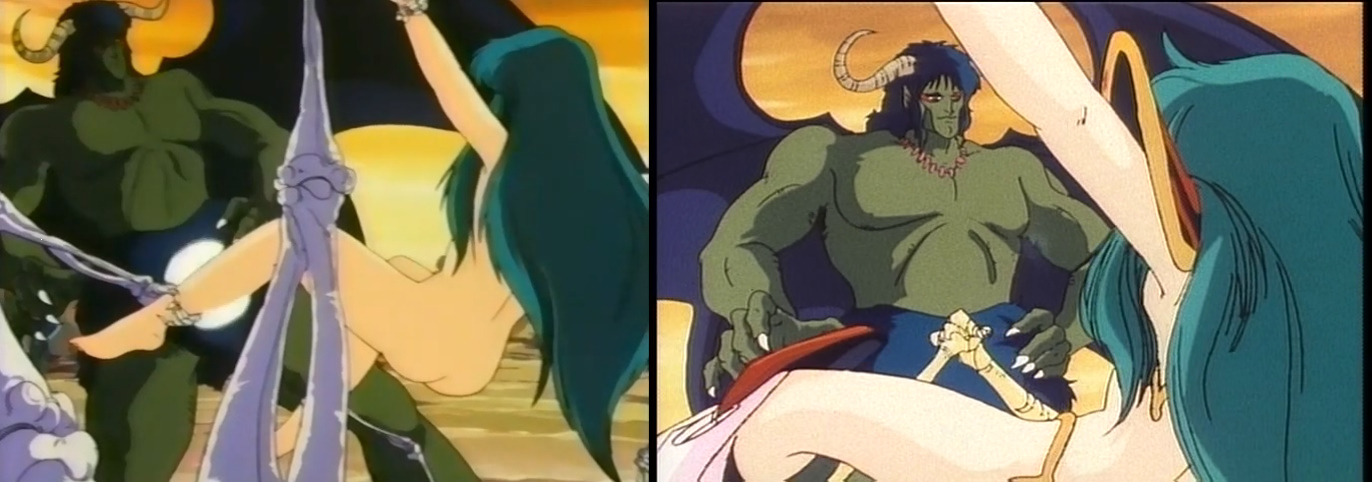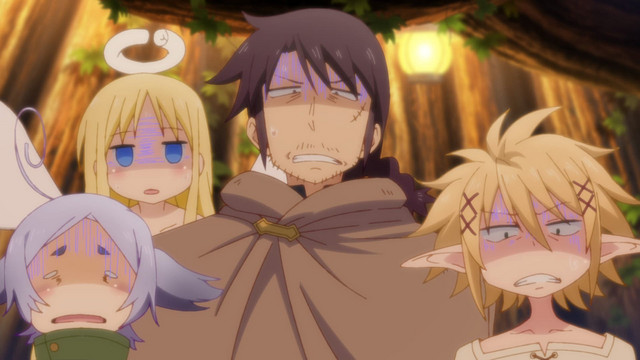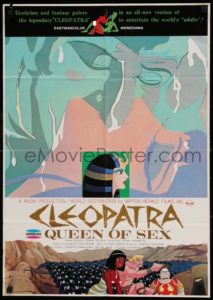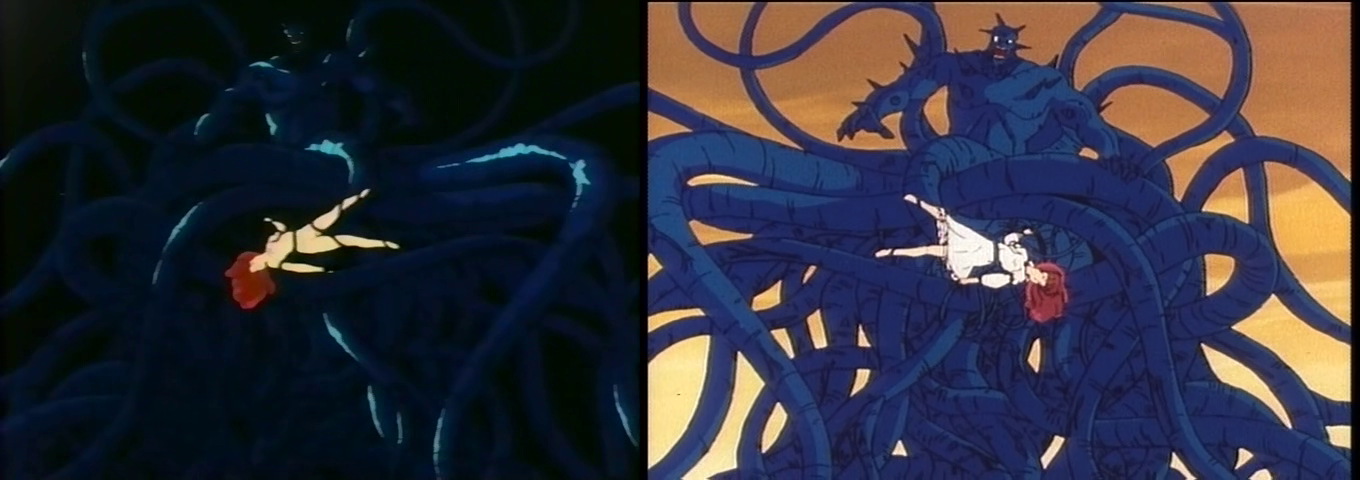Ask John: What Separates Ecchi and Hentai Anime?
Question:
In your opinion, when does an anime crossover from using sexuality as a narrative tool such as in Kiss x Sis, Aki Sora, School Days, Kodomo no Jikan, Kite, Mezzo Forte, Shadow, Megazone 23, Fight Icer One!, to pure pornographic material? Since anime like Bible Black, Cream Lemon, and Urotsukidoji blur that line quite distinctively. Or are the examples listed above actual porn?
Answer:
The distinction between an anime that contains sex and a pornographic anime can be especially difficult to make due, partially, to differences in the Japanese and American approach to sexuality and varying cultural interpretations of the Japanese word “hentai.” Moreover, distinction can be challenging due to individual subjective perceptions. As US Supreme Court Justice Potter Stewart stated in 1964 regarding what is and isn’t pornography, “I know it when I see it.” Ultimately, the division between “ecchi” and “pornographic” anime lies within perceived intent and an arbitrary yet common perception of degree.
In Japanese language the term “ecchi” may be translated as “risqué” or “lewd.” Because of the Japanese pronunciation of the word, it’s often abbreviated as just “H.” Foreigners often mistakenly presume that the Japanese abbreviation “H” refers to the word “hentai,” which means “weird” or “perverted,” not necessarily limited to sexual connotation. For example, a person who regularly eats rotten meat might be called “hentai” or “weird.” Foreigners, though, have practically universally interpreted the word “hentai” to strictly mean “pornographic.” Largely because Japan isn’t predominantly Christian and therefore isn’t steeped in the Christian morality of sexuality, sex is typically treated a bit more liberally within Japanese culture. So even children’s cartoons such as Ranpou and Maichingu Machiko-sensei contain a emphasis on sexuality that would be taboo within similar American children’s cartoons. Typically most viewers can easily distinguish a difference in extremity and intention between an anime that prominently references sex, such as KISSxSIS or School Days, and a deliberately pornographic anime like Injuh Gakuen ~ La Blue Girl or Cream Lemon. Whether consciously or not, most viewers can perceive whether the intention of the program is to include sex for the purpose of depicting an entertaining story or to depict sex for the purpose of evoking sexual gratification. Similarly, most viewers can quickly and accurately sense a difference between Risky Business and Debbie Does Dallas. The difference becomes a bit more difficult in the case of Urotsukidoji. Arguably the intention of the story is to convey an apocalyptic horror story in which sex is prominent as a graphic metaphor for the interconnectedness and intimacy of violent destruction and creation. The sheer explicitness of the sex within the Urotsukidoji franchise necessitates a classification as adults-only material. Distinction becomes most challenging with cases including A-Kite Kage ~ Shadow, and Maryu Senki (specifically the first OVA). Most accurately, these productions are unquestionably for adult viewers only, but the reason for the exclusivity is as much because of the programs’ moral ambiguity and narrative intensity as because of the inclusion of graphic sex. A-Kite and Mezzo Forte, for example, unlike Urotsukidoji, are not even thematically about sex. The shows are simply depictions of a harsh, seedy, adult universe that happens to include harsh, graphic sexuality. Unquestionably Kite, the Mezzo Forte OVA, and Kage ~ Shadow are adult material; however, whether they’re pornographic may be a determination that only individual viewers can individually decide.
Another complication to the issue of distinguishing risque anime from pornographic anime arises from artistically-oriented productions including Cleopatra (1970) and Kanashimi no Belladonna. Cleopatra was co-directed by Osamu Tezuka, an animator widely recognized as a Japanese parallel to Walter E. Disney. Both films were animated by Tezuka’s Mushi Productions, the same studio responsible for acclaimed children’s programs including Tetsuwan Atom, Jungle Taitei, Moomin, and Ribbon no Kishi. Cleopatra, when distributed theatrically in America in 1972, was titled “Cleopatra: Queen of Sex” and screened with a self-applied X-rating. While rather abstractly and symbolically rendered, Kanashimi no Belladonna nevertheless contains rather graphic sexuality, and the film is now regarded as one of the earliest erotic anime. But just as one may debate Robert Mapplethorpe photography as art or pornography, the same debate can be applied to these anime films.
The 1984 Cream Lemon video series may serve as a great baseline for discussion. Numerous episodes of the series have legitimate narrative substance yet still contain explicit sexuality. In fact, the very first episode of Cream Lemon eventually evolved into the theatrical Tabidachi: Ami Shuushou motion picture that’s strictly a romantic drama. The “Ami” movie was even theatrically screened as a double-bill with the Project A-Ko movie, which has never been legitimately called pornographic despite also having its roots in Fairy Dust’s Cream Lemon writing rooms. Although the Cream Lemon episodes typically emphasize story over graphic sex, the episodes frequently revolve around sexuality and consistently contain enough graphic sex to be universally considered pornography. No strict percentage of sex within a production serves as a dividing line between “ecchi” and “adult.” Rather, the distinction is typically made by a collective agreement. When something “feels” pornographic, it’s usually categorized as porn. When something merely feels risqué, regardless of how provocative it gets, such as Ishuzoku Reviewers or Peter Grill to Kenja no Jikan, it’s typically still widely considered “ecchi” rather than full-blown pornography. Often, although equally arbitrary, producers and distributors help clarify classifications for the public audience. Famously, studio Sai Enterprises (Superdimensional Romanesque Samy Missing 99, Twinkle Heart) released the first Dream Hunter Rem OVA in June 1985 as a 22-minute-long adults-only video. Six months later the episode was re-released in December 1985 as an extensively re-animated and re-edited 46-minute “all ages” cut. In April 2017 ComicFesta began distributing anime television series released in all-ages broadcast versions and parallel adults-only web-streaming versions. The first title was Shoryo to Majiwaru Shikiyoku no Yoru ni.

In January 2020 FUNimation abruptly ceased streaming the then current “Interspecies Reviewers” anime television series although the Wakanim streaming service continued simulcasting the series in Europe while AnimeLab continued simulcasting the show in Australia and New Zealand. Even the home video version of Ishizoku Reviewers doesn’t contain any “hardcore” graphic sex and the show has never widely been deemed pornographic, yet it was still considered provocative enough for both FUNimation and even Japan’s TOKYO MX broadcast network pulling the title from delivery. To provide another example, the sex scene in Megazone 23 part 2 is quite intense. Yet the presence of one scene in the feature-length film has never qualified Megazone 23 Part 2 as a pornographic anime or even as an ecchi anime. So determining exactly what constitutes “ecchi” versus “hentai” has long been a difficult and complicated challenge without clear delineations or answers. Ultimately, while animators, producers, and distributors may exert some influence and control, primarily the decision is consistently made by the viewing audience at large that “knows it when it sees it.”




